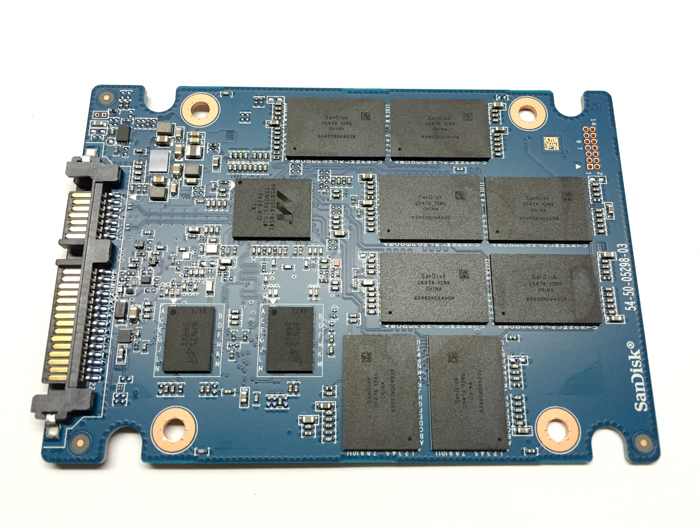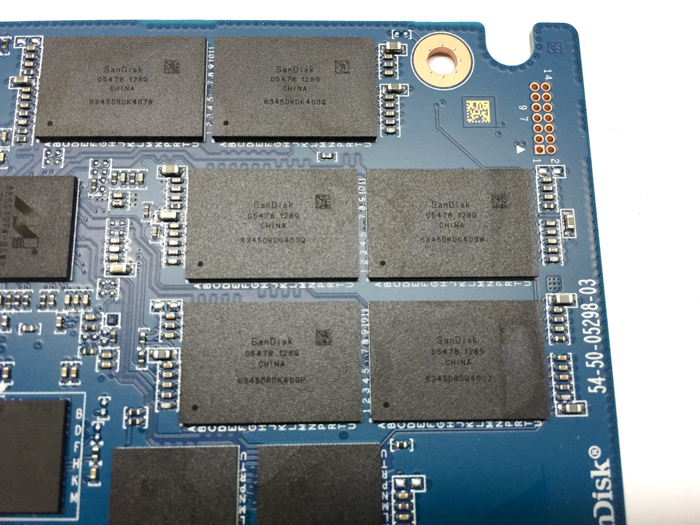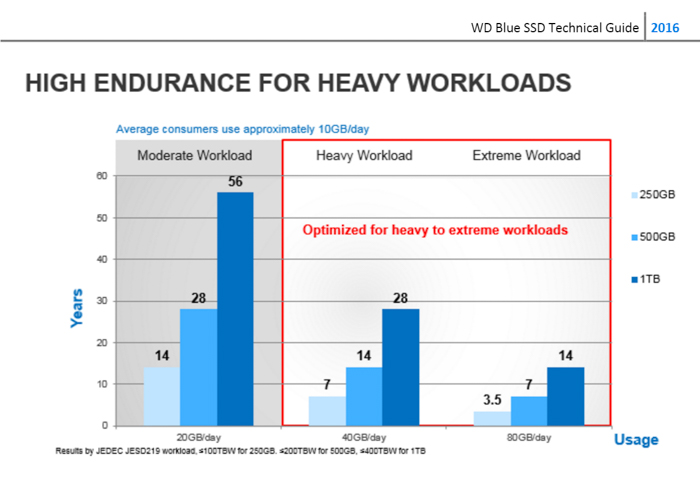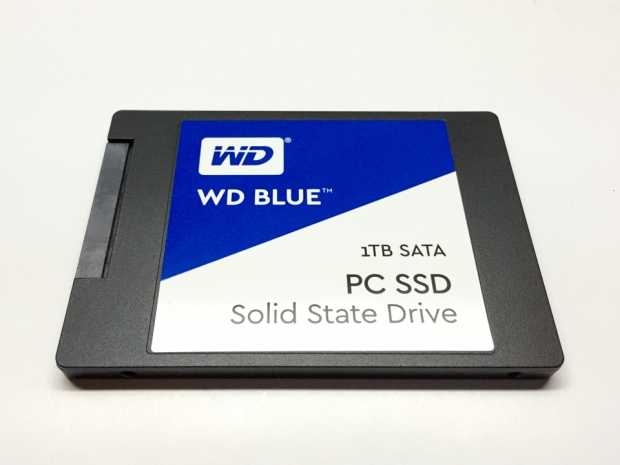Index
Marvell 88SS1074 controller with SanDisk NAND modules
The WD Blue series features eight SanDisk second-gen 15nm TLC NAND flash modules along with a small SLC cache that allows for on-chip data transfer from SLC cache to the TLC modules. Just like the SanDisk X400, the drive also uses Marvell’s 88SS1074-BSW2 four channel controller and features a 28nm CMOS process, support for low-power mode including DevSlp, ONFI 3.0 and AES 256 encryption, and low-density parity check (LDPC) error correction.
The LDPC feature is important because it ensures proper on-the-fly error correction and is designed to have a minimal impact on latency and performance while maintaining low power usage.
Supports multi-stream for lower write amplification
A more advanced yet recent feature included in this drive is multi-stream, which was introduced in the T10 standard in May 2015 and is featured in Samsung’s PM953S NVMe SSDs. Multi-stream is a way to preserve write-amplification by erasing blocks storing unique stream IDs at the same time. A stream is basically a group of individual write data that shares similar lifetime values prior to being erased. Each stream of write data is given a unique ID which is then sent to the same erase block instead of being scattered. By clustering data with similar lifetime values into erase blocks, an SSD can erase entire stream IDs at the same time while avoiding the fragmentation of traditional garbage collection routines that often lead to higher write amplification with time.
Image source: Samsung Semiconductor, Inc. at Flash Memory Summit 2016
Samsung has illustrated this technology particularly well in a presentation given at Flash Memory Summit 2016 in Santa Clara, showing how multi-stream SSDs can use efficient data placement to reduce garbage collection procedure overheads while improving performance and product lifetime.
In addition to multi-stream, the WD Blue also supports dynamic and static wear-leveling, bad block management and background garbage collection. Other features include S.M.A.R.T. commands, TRIM, and NCQ with queue depth 32.
Terabytes written (TBW) endurance
Western Digital’s technical supporting guide to reviewers notes that the WD Blue is designed more for heavy to extreme workloads, which can range anywhere between 40GB and 80GB per day. While an average consumer reading and writing approximately 20GB of data per day can expect 56 years out of the 1TB model with 400 terabytes written, the company’s target market with a minimum of 40GB written per day can expect 28 years, while users can expect a 14-year lifespan by writing either 20GB per day to the 250GB model or 80GB per day to the 1TB model.




